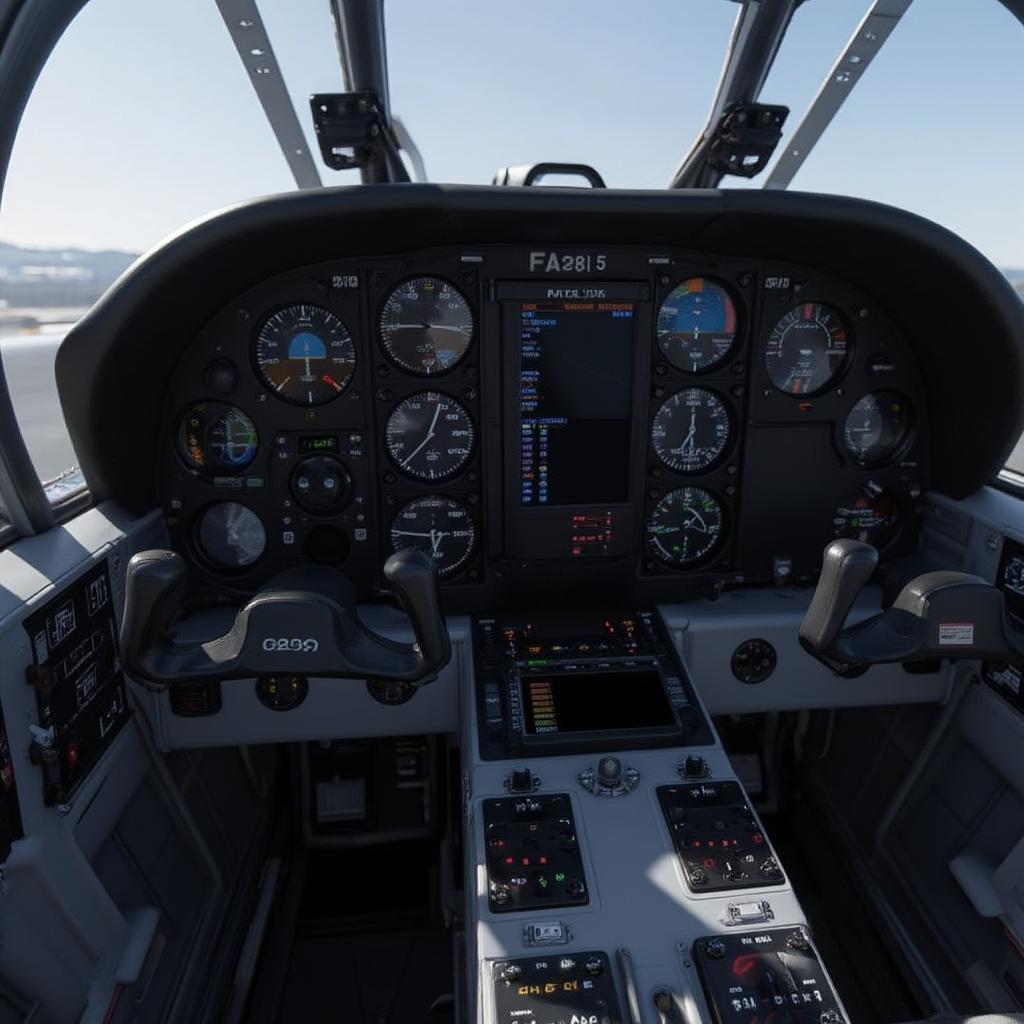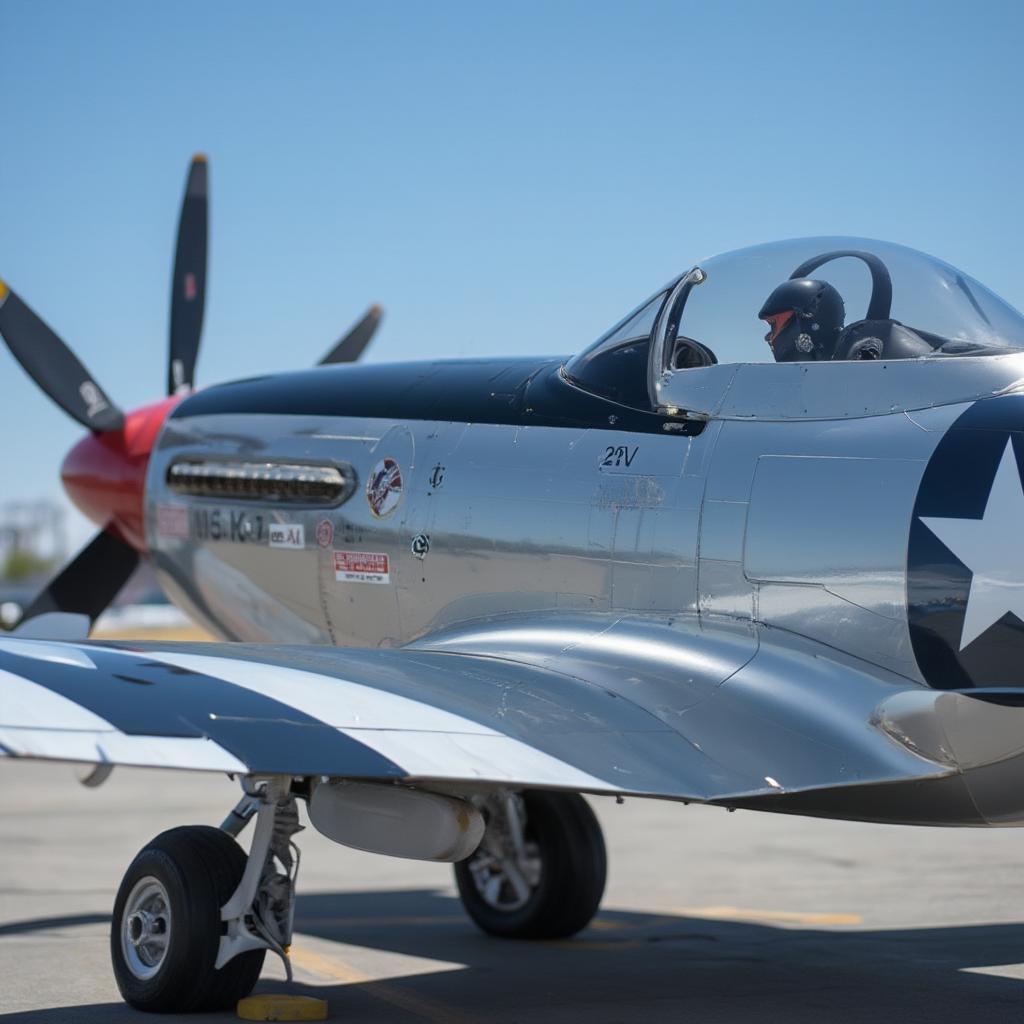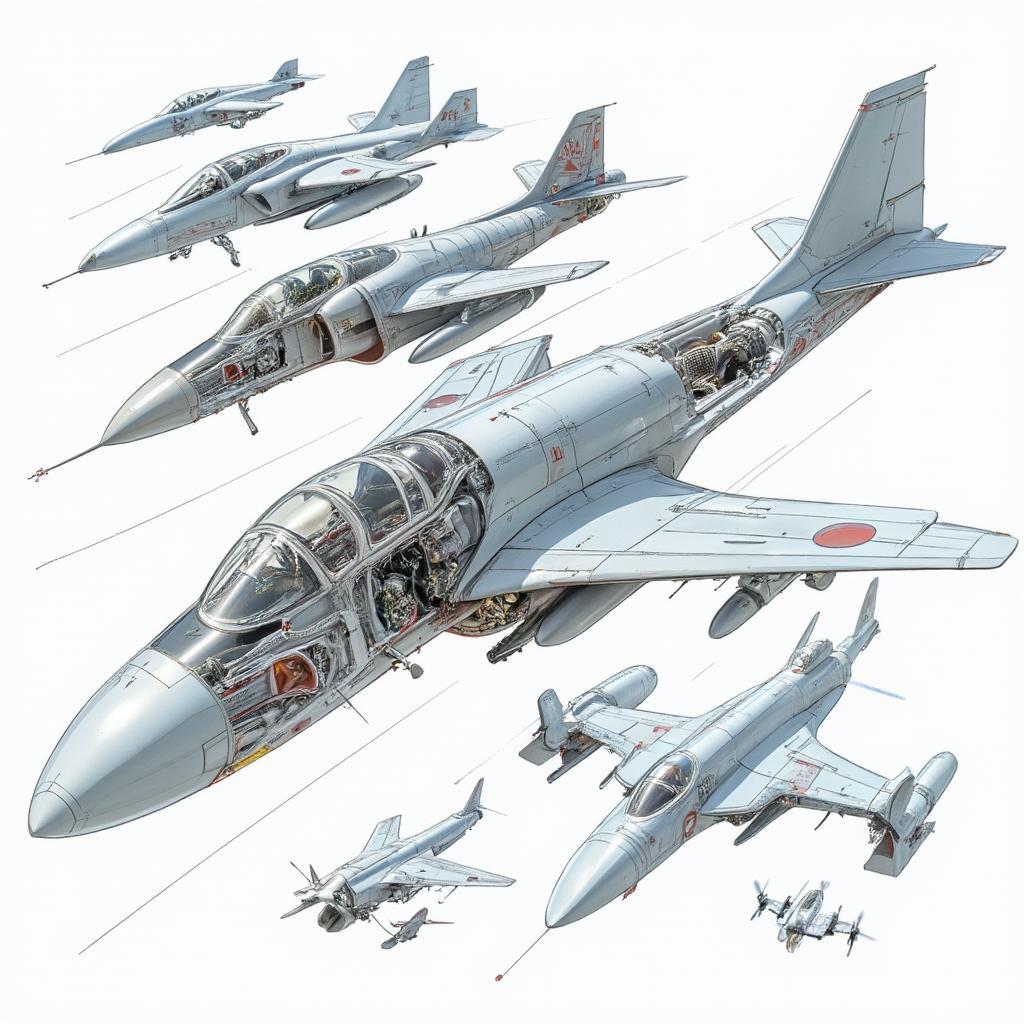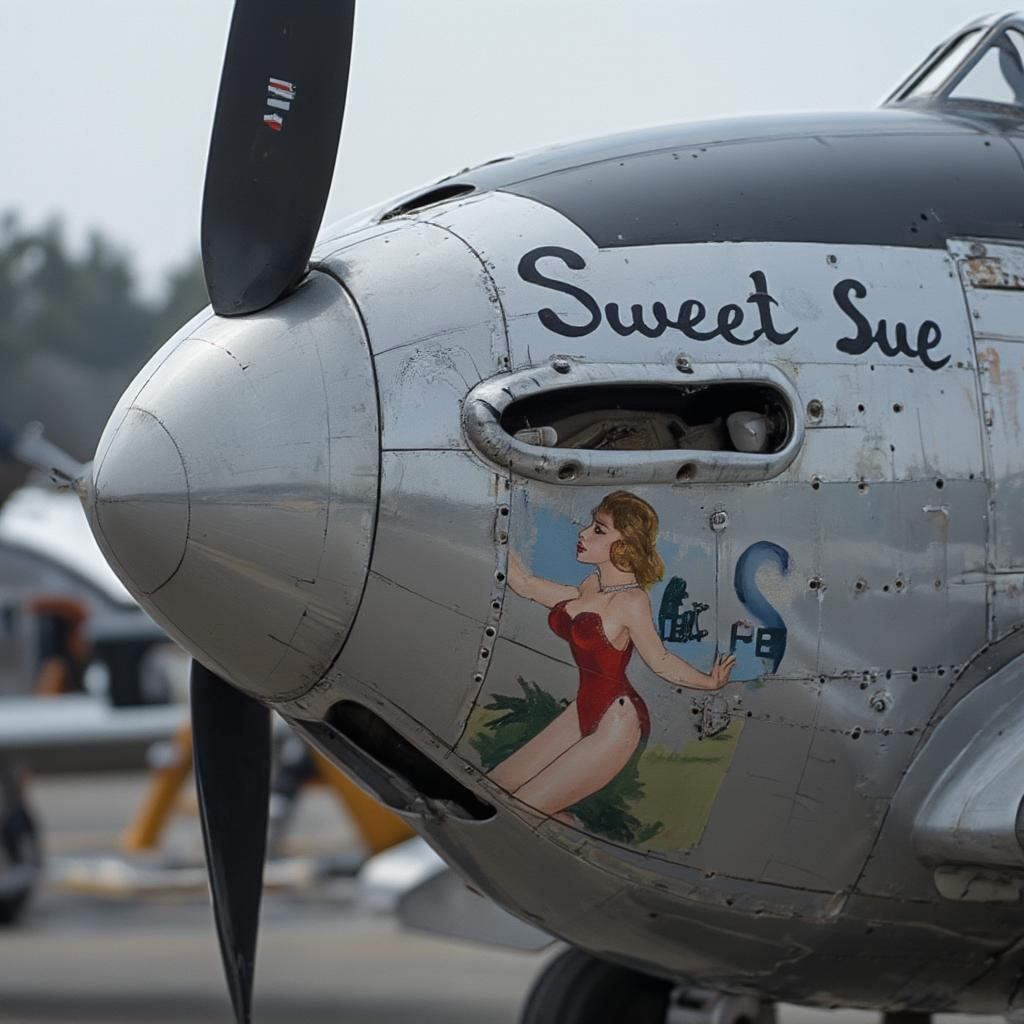F22 Raptor: Is There a 6th Generation Successor in Sight?
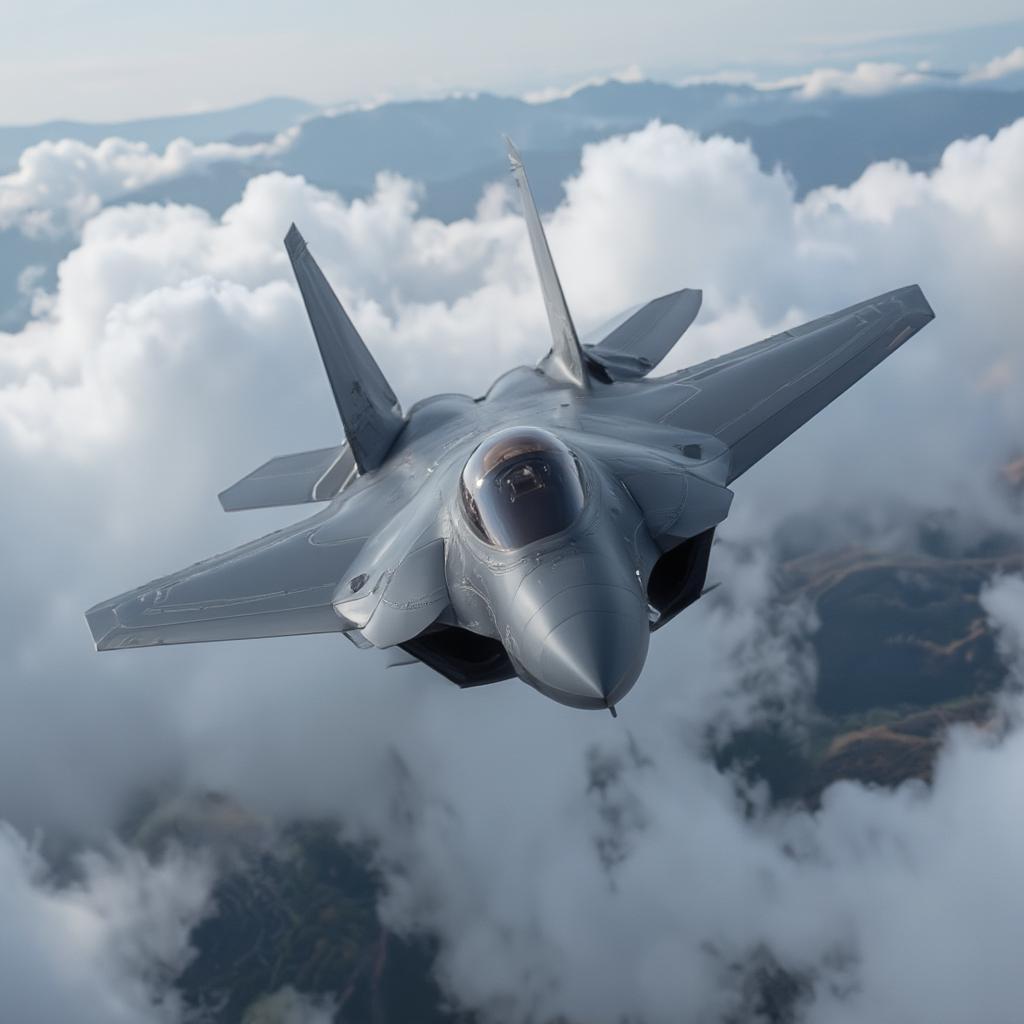
The F-22 Raptor, a marvel of aerospace engineering, has long dominated the skies, but the question on everyone’s mind is, what’s next? Will there ever be an F22 Raptor 6th Generation to follow in its legendary footsteps? This exploration delves into the potential future of air superiority and what a potential successor might look like. We’ll unpack the advanced tech, the mission needs, and the geopolitical landscape that will shape the next generation of fighter jets.
The F-22 Raptor: A Legacy of Air Dominance
The F-22 Raptor is a fifth-generation fighter that pushed the boundaries of aerospace tech when it first entered service. It is known for its combination of stealth, speed, agility, and sensor fusion. These capabilities make it a formidable aircraft against virtually any adversary. With its advanced radar and weapons systems, the Raptor has been a benchmark for fighter development for nearly three decades.
- Stealth Technology: The F-22’s stealth features make it extremely difficult to detect by enemy radar, giving it a significant advantage in combat.
- Supercruise: The Raptor can sustain supersonic speeds without using afterburners, enhancing its fuel efficiency and extending its operational range.
- Sensor Fusion: The F-22’s integrated sensors provide a comprehensive view of the battlefield, allowing pilots to make quick, informed decisions.

The F-22 is not just a machine; it’s a symbol of American air power, a testament to the nation’s engineering prowess and commitment to maintaining air dominance. But as technology marches onward, the limitations of even the most advanced platforms become apparent, ushering in the need for the next generation of air combat capabilities.
The Concept of a 6th Generation Fighter
The term “6th generation fighter” is less a fixed definition and more a collection of advanced capabilities and design goals. Unlike previous generations, which were defined by specific technological leaps, the 6th generation is about seamless integration and adaptability. It’s expected to be characterized by:
- Enhanced Stealth: Beyond the radar-absorbing materials of the F-22, next-gen fighters will explore metamaterials and advanced shaping for reduced detection across various spectrums.
- Artificial Intelligence (AI): AI will play an increasing role in aircraft systems, from piloting and navigation to threat analysis and combat decision-making.
- Directed Energy Weapons: Lasers and other directed energy weapons will replace conventional kinetic weapons, allowing for engagement at the speed of light.
- Hypersonic Capabilities: The next generation will focus on high-speed flight, with the potential for hypersonic capabilities, exceeding Mach 5.
- Networked Warfare: These fighters will be integral parts of a larger network of sensors, platforms, and command centers, sharing information in real time.
- Manned-Unmanned Teaming: Collaboration between manned fighters and unmanned systems will be crucial for complex missions.
How Might a 6th Generation F-22 Successor Evolve?
The idea of an “F22 Raptor 6th generation” successor raises some fascinating possibilities. It would likely not be a direct descendant but rather a radical departure, leveraging cutting-edge technology to surpass the limitations of current platforms. Here’s what we might expect:
- A More Versatile Platform: The new jet would incorporate multi-role capabilities, extending beyond air superiority to strike, reconnaissance, and electronic warfare.
- Modular Design: The ability to swap out modules and technologies rapidly will be critical for adaptability and quick upgrades.
- Advanced Sensor Suite: Improved radar, infrared, and electro-optical sensors, integrated with AI for superior situational awareness.
- Increased Range and Payload: A next-gen fighter would need to carry a larger arsenal while having an increased range for greater operational flexibility.
- Cyber Warfare Capabilities: Cyber defenses and offensive capabilities will be integrated to protect against digital threats and exploit enemy systems.
“The transition to 6th-generation fighters isn’t about incremental upgrades; it’s about a paradigm shift. We are talking about completely rethinking how we approach air combat, focusing on network integration, autonomy, and directed energy.” – Dr. Evelyn Reed, Aerospace Analyst at the Center for Future Warfare Studies.
Why Does the World Need a 6th Generation Fighter?
The need for an F22 Raptor 6th generation successor is driven by both technological advancements and a changing geopolitical landscape. As potential adversaries develop their own advanced systems, the U.S. and its allies need to stay ahead of the curve. Key factors include:
- Emerging Threats: New and advanced missile systems, drone technologies, and cyber warfare capabilities threaten to challenge existing air dominance concepts.
- Technological Competition: Other nations are also investing heavily in next-generation fighter technologies, creating a need for continuous innovation.
- Changing Warfare: Modern combat is now a multi-domain operation involving air, land, sea, space, and cyberspace.
- Extended Operational Range: The next generation of warfare requires platforms capable of operating across vast geographical regions.
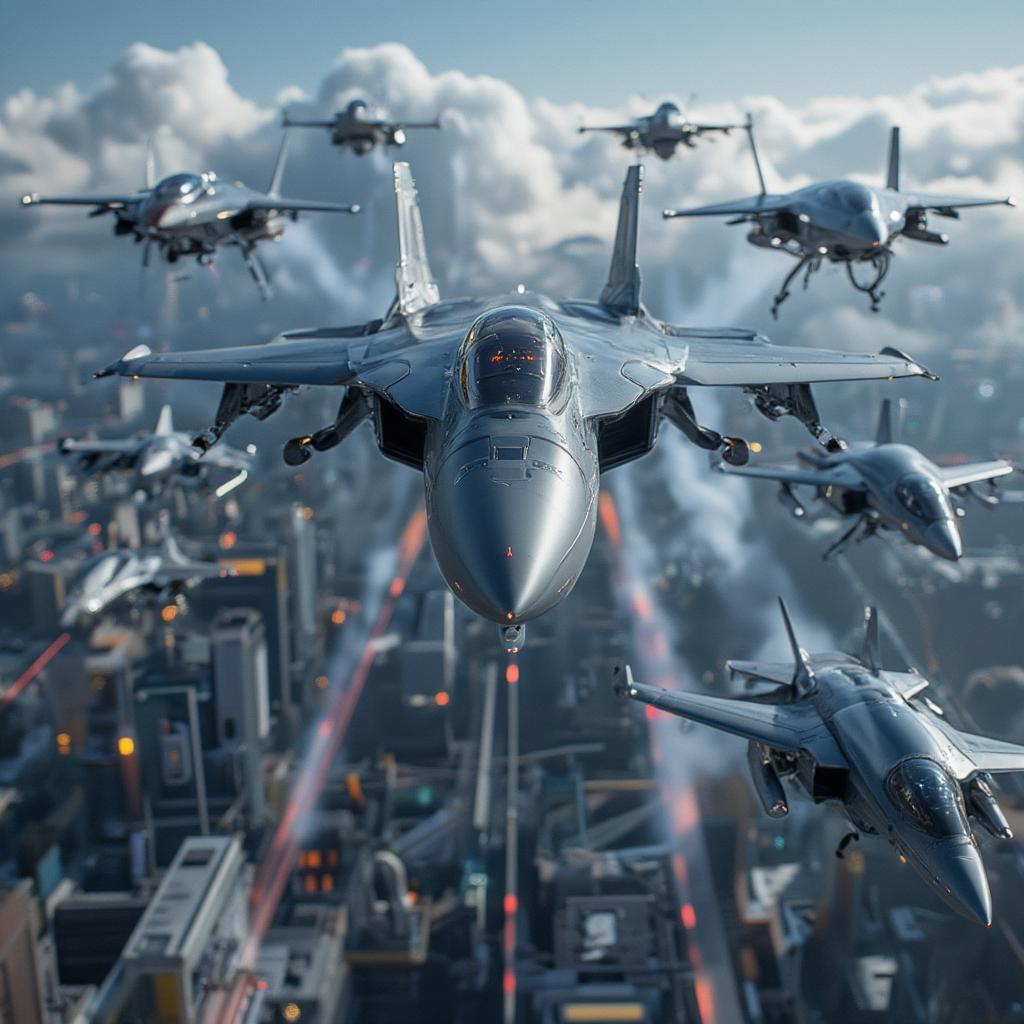
The development of a 6th generation fighter is not just about preserving military supremacy; it’s about ensuring national and global security. This will provide the ability to maintain a credible deterrence against potential aggressors and ensure stability in a world facing rapid change.
Challenges in Developing a 6th Generation F22 Successor
Developing a fighter like a 6th-generation “F22 Raptor 6th generation” is a monumental undertaking with many challenges:
- Technological Hurdles: Integrating emerging technologies like AI, hypersonic capabilities, and directed energy weapons into a single platform is extremely complex.
- Budget Constraints: The cost of research and development, along with the eventual production, will be substantial, requiring political will and financial resources.
- Logistical Complexities: The next-generation fighter will demand a sophisticated maintenance and support infrastructure that is sustainable and scalable.
- Testing and Evaluation: The rigorous testing and evaluation process will require significant time and resources to make certain the aircraft’s capability.
- Human Factors: Pilots will need to be trained to operate new and complex systems, and the manned-unmanned team concept will demand a new approach to warfighter education.
“The sheer complexity of a 6th generation aircraft requires not just engineering breakthroughs but also a cultural change within the armed forces. We need to adopt new operational paradigms to fully realize their potential.” – General Marcus Thorne, USAF (Retired), former Chief of Air Combat Command.
Current Projects and Potential Successors
While no formal “F22 Raptor 6th generation” program has been announced, there are multiple programs and initiatives underway that could shape the future of U.S. air power, for example:
- Next Generation Air Dominance (NGAD): The NGAD program is a U.S. Air Force initiative to develop a family of systems, including a manned fighter jet and a range of unmanned platforms. This project aims to replace the F-22 Raptor in due time.
- Lockheed Martin’s Advanced Development Programs: Lockheed Martin is exploring and working on several advanced concepts. These projects focus on a combination of stealth, speed, AI, and adaptable designs.
- Other International Efforts: Many countries, including the UK, France, and Russia, are also developing their own next-generation fighter concepts.
These efforts are all part of a global race to develop the next generation of air combat capabilities. The U.S. is committed to maintaining its technological edge, and these programs are critical to achieving that.
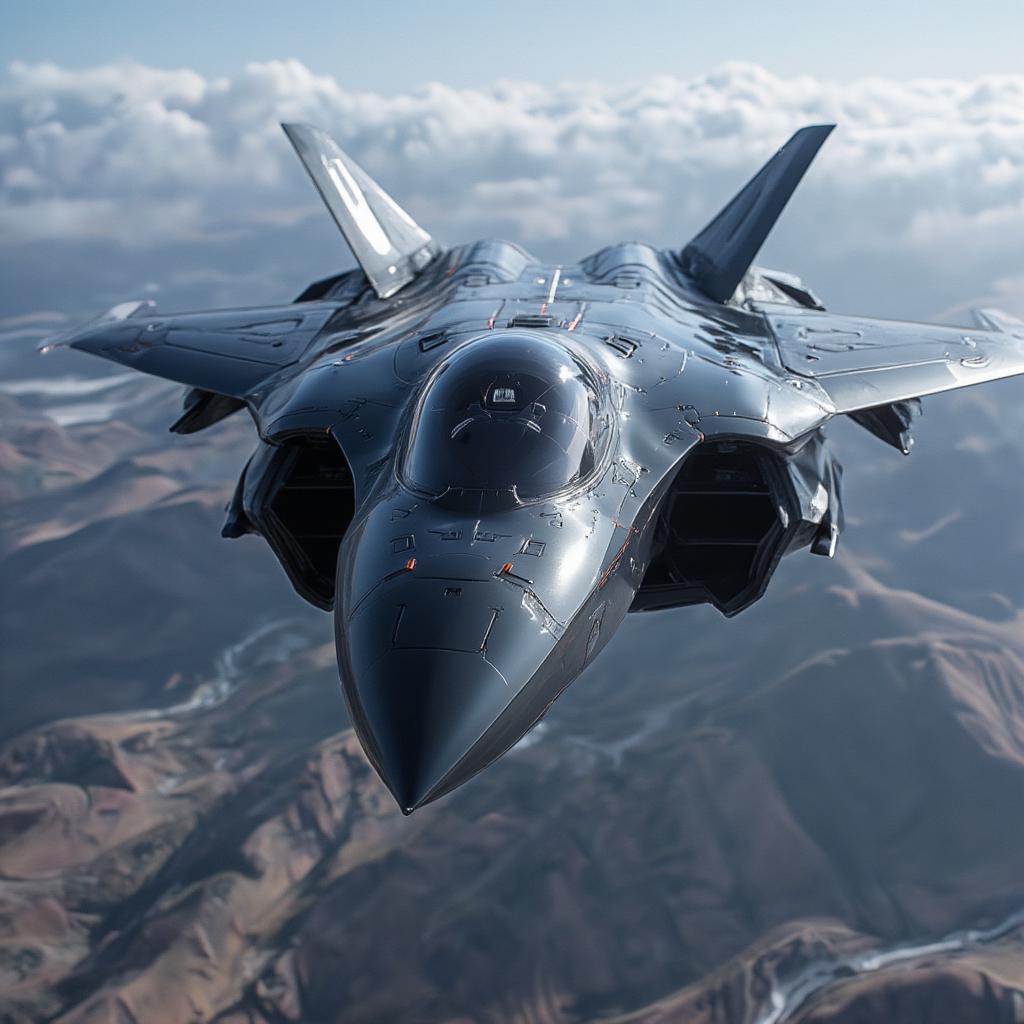
Conclusion: The Evolving Future of Air Combat
The F-22 Raptor has left an indelible mark on air combat history. As we look to the future, the need for an F22 Raptor 6th generation successor becomes more important. The next-generation fighter will not only be faster and stealthier, but also smarter and more adaptable, integrating AI, directed energy weapons, and networked warfare capabilities. The challenges are significant, but the need is undeniable. The development of these cutting-edge platforms will have a profound impact on global security and the future of air power.
Frequently Asked Questions
1. What exactly is a 6th generation fighter jet?
A 6th-generation fighter jet is not strictly defined, but it refers to a new generation of military aircraft that includes advanced capabilities like AI, directed energy weapons, enhanced stealth, and hypersonic speeds, among other technological advances. These enhancements will be critical for maintaining dominance in future air combat scenarios.
2. Will there be a direct successor to the F-22 Raptor?
While there might not be a single, direct replacement, the U.S. Air Force’s Next Generation Air Dominance (NGAD) program is aimed at developing a family of systems that will ultimately fill the capabilities of the F-22. This could include manned and unmanned platforms.
3. How will AI be integrated into 6th generation fighters?
AI will be a core component, assisting in pilot functions, such as threat analysis, navigation, decision-making, and management of complex systems, improving situational awareness and enabling faster reactions to threats.
4. What are the main challenges in developing a 6th generation fighter jet?
The challenges include complex integration of new technologies, high costs, complex logistical requirements, rigorous testing phases, and the integration of new human-machine interfaces and training for the pilots.
5. What are some of the key new weapons for 6th generation fighters?
Directed energy weapons, such as laser weapons, are expected to play a larger role, along with advanced hypersonic missiles, and conventional kinetic weapons.
6. What is the role of manned-unmanned teaming in future air combat?
Manned-unmanned teaming is expected to be crucial, allowing a manned fighter to command and coordinate a team of unmanned drones for surveillance, targeting, and attack missions, improving operational efficiency and survivability.
7. How does international competition affect the development of 6th generation fighters?
International competition drives the need for continuous innovation, as other nations are also pursuing their own advanced fighter concepts, requiring constant advancements for the US and its allies to stay at the leading edge of technology and capability.
8. Is a 6th-generation fighter only about air-to-air combat?
No, these fighters are expected to have a broader set of capabilities, including electronic warfare, strike missions, intelligence gathering, and cyber warfare, making them more versatile in modern multi-domain operations.

